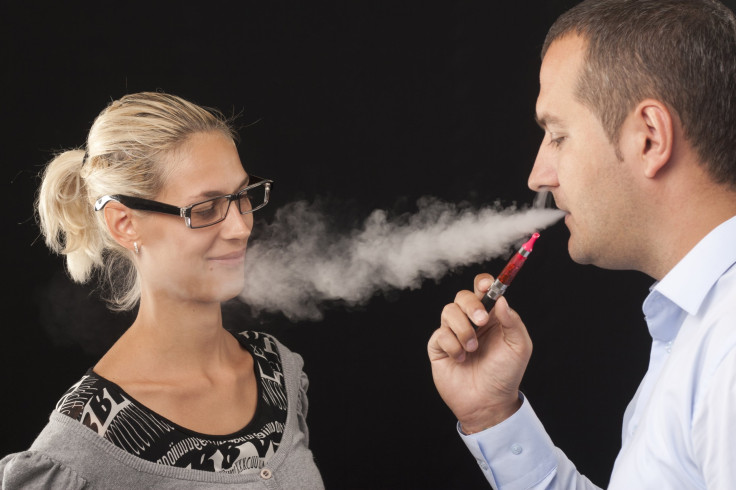81% Of Young Parents Say E-Cigarettes Are Less Harmful To The People Around Them; But Are They Really?

Researchers are finding electronic cigarettes have developed a good reputation around young parents who believe that the devices are less harmful than regular cigarettes. Many young parents are using electronic according to research that will presented on Sunday, May 4, at the Pediatric Academic Societies (PAS) annual meeting in Vancouver, B.C.
Electronic cigarettes, better known as e-cigarettes, are battery-powered devices that are designed to mimic real cigarettes, except they contain a nicotine-laced liquid that is vaporized and inhaled by smokers. They are similar to real cigarettes — though they come in a variety of nicotine levels and flavors — and many regular cigarette smokers have switched to e-cigarettes as a healthier alternative. As of late, the U.S. Food and Drug Administration has not evaluated any e-cigarettes for safety or effectiveness and there is no required standard for their production.
A random sample of more than 3,000 adults were surveyed in September of 2013 and of those, 88 percent were between the ages of 18 to 24 years old. Nearly a quarter of them were parents (22 percent).
Thirteen percent of those parents reported trying e-cigarettes, with 45 percent saying that they had never smoked regular cigarettes, or that they were former smokers. Six percent of parents who tried e-cigarettes reported using one in the past 30 days and 49 percent of recent users had never tried them before or were formers smokers.
When parents were asked why they used electronic cigarettes, 81 percent said they thought they were less harmful to people around them than when they smoked regular cigarettes. Seventy-six percent said they thought e-cigarettes were more acceptable to non-tobacco users and 72 percent said they chose the electronic version because they were allowed to smoke in places where regular cigarettes weren’t allowed.
"This study has two alarming findings. First, the risks of e-cigarette use and exposure to vapor are unknown, yet many parents report using these electronic cigarettes to reduce harm to others,” said lead author Dr. Robert C. McMillen, an associate professor at the Social Science Research Center at Mississippi State University. “Second, half of current users are nonsmokers, suggesting that unlike tobacco harm-reduction products, e-cigarettes contribute to primary nicotine addiction and to renormalization of smoking behaviors."
All young adults who tried e-cigarettes reported also trying a menthol or fruit-flavored device. Comparatively, only 65 percent of those 25 and older had tried menthol or fruit flavored ones, which may be a reflection of marketing tactics.
Recently, two reports found electronic cigarette manufacturers have been using advertising to target youth, which could lead to a new generation of nicotine addicts. The studies which were conducted by the anti-tobacco organization, Legacy, found that between January to November 2013, e-cigarette television advertisements reached 29.3 million teens and young adults. Of those, more than half were between the ages of 12 to 17 years old.
As an unregulated substance, e-cigarettes do not have to adhere to the same marketing laws as regular cigarettes, which have been banned from television and radio since 1970. Recently, the FDA issued a proposed rule to extend the definition of a tobacco product in order to include e-cigarettes within the umbrella.
According to the FDA, it is unknown if e-cigarettes may lead young people to try other tobacco products such as regular cigarettes, which are medically proven to cause disease and premature death.
The PAC’s study did reveal that only seven percent of young adults reported they would use e-cigarettes to help them quit smoking, compared to the 58 percent of older adults who would use it as an aid to quit.
Source: McMillen et al. Electronic Cigarette Use Among Young Adults and Use of Electronic Cigarettes Among Parents. At The Pediatric Academic Societies Annual Meeting. 2014.



























